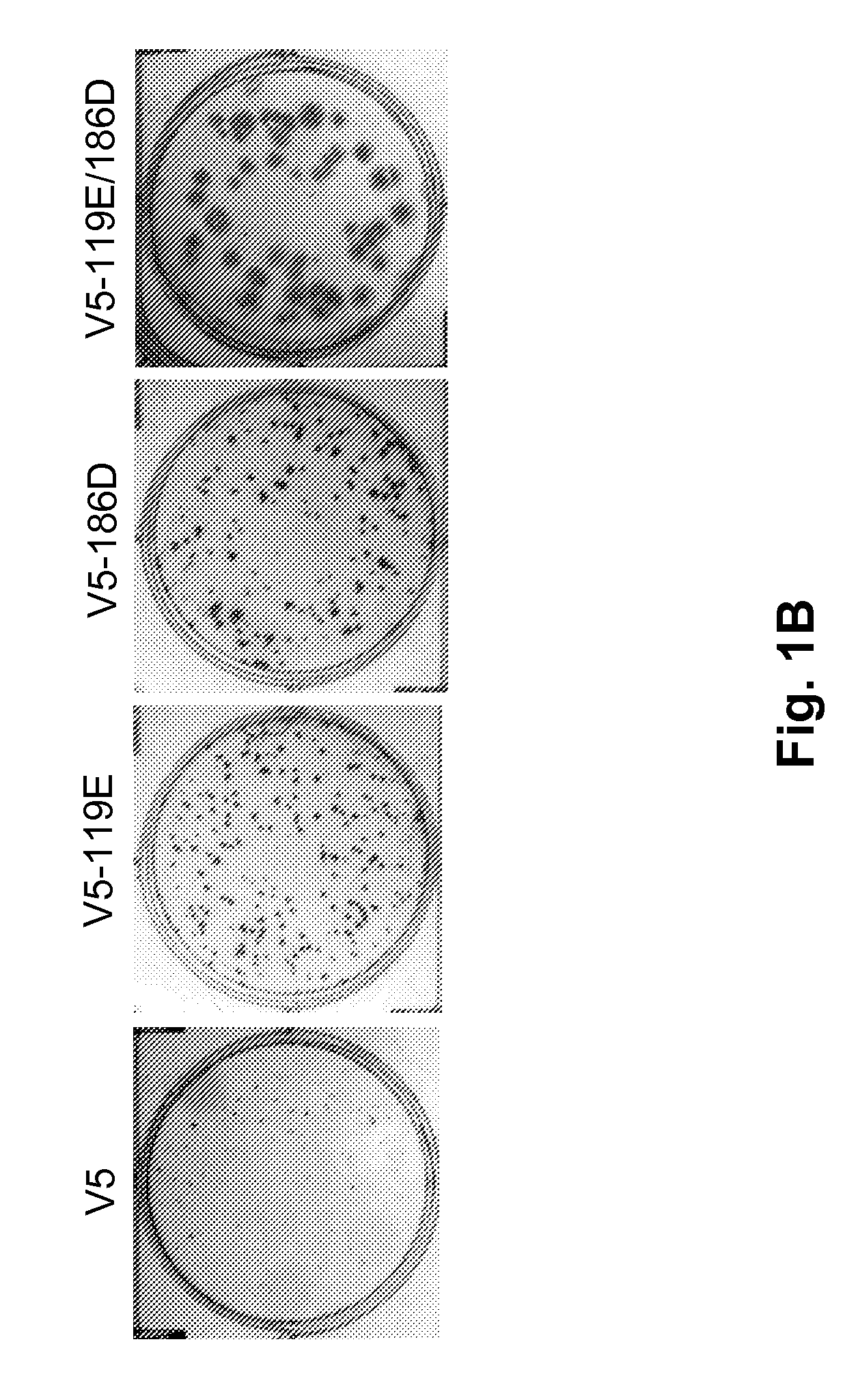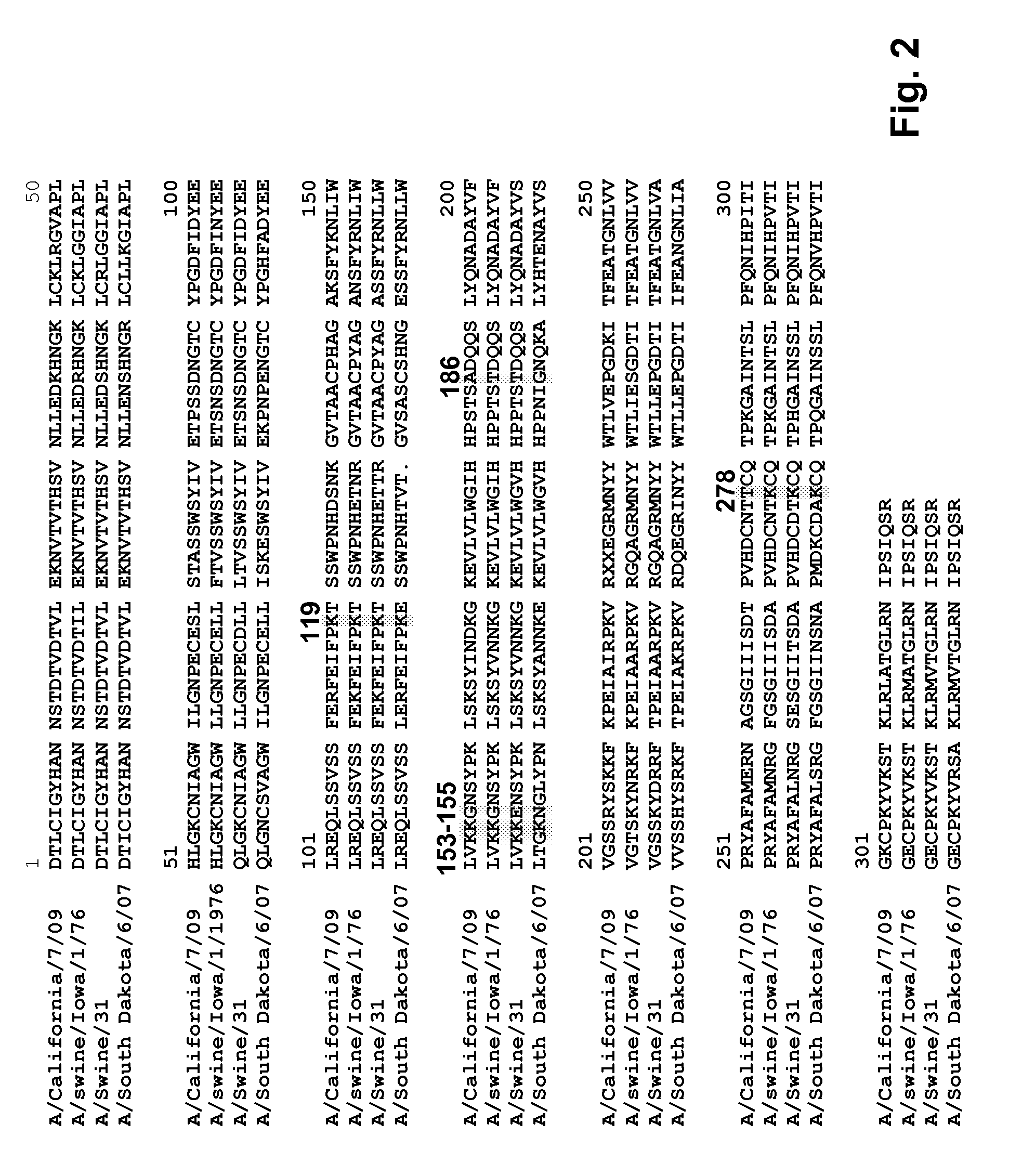Swine influenza hemagglutinin variants
a technology of swine influenza and variants, applied in the field of swine 1976 virus replication, can solve the problems of severe loss of virus potency, poor candidate strains of h1n1 reassortant influenza virus for the development of vaccine strains, etc., and achieve the effects of increasing the replication rate of reassortant a/ca/7/09 virus, and reducing the risk of infection
- Summary
- Abstract
- Description
- Claims
- Application Information
AI Technical Summary
Benefits of technology
Problems solved by technology
Method used
Image
Examples
examples
[0167]The invention is now described with reference to the following examples. These examples are provided for the purpose of illustration only and the invention should in no way be construed as being limited to these examples but rather should be construed to encompass any and all variations which become evident as a result of the teachings provided herein.
Materials and Methods
[0168]Generation of recombinant viruses: Wild type (wt) influenza A H1N1 viruses, A / CA / 4 / 09 isolated from MDCK cells and A / CA / 7 / 09 isolated from eggs, were received from Centers for Disease Control and Prevention (CDC). A / CA / 4 / 09 egg adapted viral RNA was provided by Dr. Ziping Ye of Food and Drug Administration (FDA). The HA and NA gene segments of A / CA / 4 / 09 and A / CA / 7 / 09 were amplified by RT-PCR using primers that are universal to the HA and NA gene end sequences and cloned into the plasmid vector pAD3000 (Hoffman (2000) PNAS 97:6108-6113). Site-directed mutagenesis was performed to introduce specific chang...
PUM
| Property | Measurement | Unit |
|---|---|---|
| Volume | aaaaa | aaaaa |
| Volume | aaaaa | aaaaa |
| Volume | aaaaa | aaaaa |
Abstract
Description
Claims
Application Information
 Login to View More
Login to View More - R&D
- Intellectual Property
- Life Sciences
- Materials
- Tech Scout
- Unparalleled Data Quality
- Higher Quality Content
- 60% Fewer Hallucinations
Browse by: Latest US Patents, China's latest patents, Technical Efficacy Thesaurus, Application Domain, Technology Topic, Popular Technical Reports.
© 2025 PatSnap. All rights reserved.Legal|Privacy policy|Modern Slavery Act Transparency Statement|Sitemap|About US| Contact US: help@patsnap.com



